4 TIPS TO ELIMINATE BENCH PRESS WRIST PAIN / WRIST INJURY
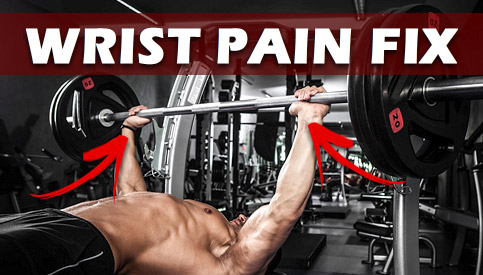
Got wrist problems while benching? You’re not alone. Bench press wrist pain is a very common complaint among lifters.
Not being able to perform your benches properly due to something as simple as a nagging wrist can certainly be quite the annoyance. Fortunately, there are several things you can do about it.
Whether you’re currently dealing with an existing wrist injury or just want to ensure that you’re benching with proper form to prevent it in the future, here are 4 simple but effective tips you can start employing right away…
Tip #1: Keep Your Wrists In A Neutral Position.
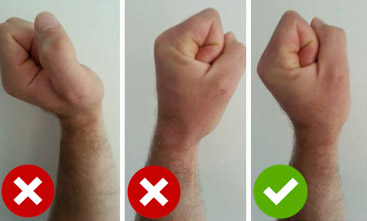
One of the biggest mistakes lifters make when performing the bench press is allowing their wrists to bend backward or forward as seen above.
Not only does this decrease the amount of weight you can lift since the force is no longer being applied straight into the bar, but it also places a lot of stress on your wrists, especially as you progress to heavier and heavier weights.
Fortunately, you can fix this technical issue pretty easily.
Aside from simply making a conscious effort to keep your wrists straight, bent wrists are also often a result of setting the bar too high in your hands. This increases the leverage on your wrist which can cause you to lose your neutral position.
Instead, you should place the bar relatively low across the meaty part of your palms closer to your wrists as seen here:
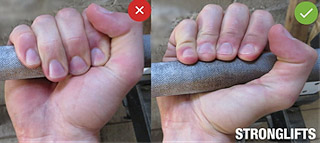
Make sure to grip the bar tightly so that it can’t roll backward or forward throughout the exercise.
What about the commonly used false/thumbless grip?
I’d suggest avoiding this for the same reason, as it will usually cause your wrists to drift out of optimal positioning.
On top of this, the risk of the bar slipping will greatly increase since your thumb won’t be there to stop it if it begins rolling forward. (It’s called the “suicide grip” for a reason)
Tip #2: Adjust Your Grip Width.
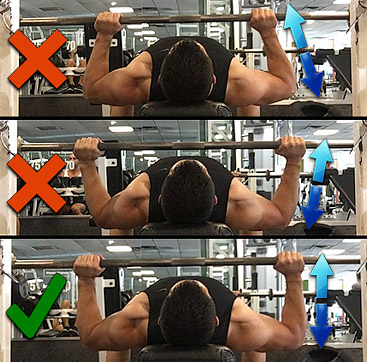
Using an excessively wide grip while bench pressing will result in radial deviation, while a grip that’s too narrow causes ulnar deviation. (Read my article on proper close-grip bench press form if you want to learn more)
In layman’s terms, you’ll lose that all-too-important neutral wrist position by causing your wrists and forearms to excessively bend either inward or outward.
What is the optimal grip width to minimize bench press wrist pain and get the very most out of the exercise?
Since everyone’s body is a bit different in terms of joint length, there’s no single set-in-stone distance that will apply to every lifter.
The bottom line is to find the grip width that causes your forearms to be vertical at the very bottom of the exercise with your wrists and elbows directly stacked on top of eachother.
Not only will this minimize the stress on your wrists, but it’s also easier on your shoulder joints (an excessively wide grip will place a lot of stress on that area) and will maximize your strength since going too narrow places your forearms on an incline and puts more emphasis on the triceps.
Experiment with this to find the correct grip width for yourself, and if possible, videotape yourself from behind the bench to confirm that your wrists and elbows are in the proper position.
You may need to decrease your bench press weight slightly while you get used to the new gripping technique and grip width, but you’ll be much better off in the long run this way.
Tip 3: Use Wrist Wraps.
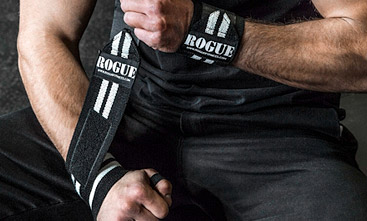
If you’ve implemented the previous two tips but your bench press wrist pain isn’t subsiding, wrist wraps may be a useful tool in order to offer some additional support.
Wrist wraps are pieces of cloth or leather that help to stabilize your wrists and keep them straight. The tighter your wrap them, the more stability they provide and the easier it is to keep your wrists neutral.
However, keep in mind that wrist wraps are not going to fix poor bench pressing form, and even if they do alleviate some of the pain, they aren’t going to treat the underlying causes.
So, only use wraps in order to give your wrists a chance to heal and to offer some extra support while you work on your form and on fixing the root issue at play.
Tip #4: Use Dumbbells Instead.
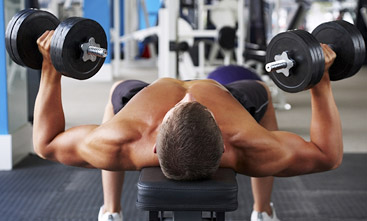
The barbell bench press remains as the most popular horizontal pressing variation in the gym.
However, the “king of upper body exercises” also locks your wrists into a fixed pronated position resulting in a higher degree of wrist tension.
While this is usually not an issue as long as proper form is being utilized, it can become problematic for lifters with underlying wrist issues.
For them, switching to a dumbbell bench press vs a barbell bench press (at least temporarily) can often be the best solution.
A dumbbell press is more joint-friendly since the wrists can be angled into a more natural position.
If the pain is particularly bad, they can also be performed using a neutral grip with the palms facing in. Such a position not only decreases wrist tension, but also reduces stress on your shoulder joints as well.
Besides, from a pure muscle building standpoint there is no absolute necessity to perform barbell bench presses in your routine in the first place.
Overall, dumbbells are superior for maximizing chest stimulation and growth since they allow for a larger range of motion and ensure that each side is being trained equally to prevent size and strength imbalances.
If you want to include a basic barbell bench press in your program that’s fine, but if you aren’t a competitive lifter and the exercise is causing you significant wrist pain, switching your focus onto dumbbell pressing for the time being is probably a good idea.
Or, you can use a dumbbell press as your primary chest exercise and perform your barbell presses afterwards with a slightly lighter weight.
Eliminate Bench Press Wrist Pain: Quick Wrap-up
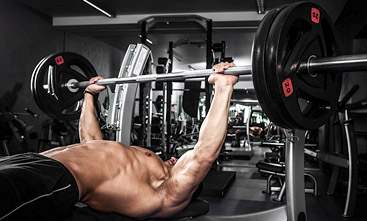
The bench press remains a standard measure of strength for many lifters. Unfortunately, heavy bench pressing over the longer term can easily take a toll on your wrists.
While you can’t protect yourself from “bad luck accidents,” you can significantly decrease your risk of wrist injuries by implementing the advice outlined above.
If you’re suffering from nagging bench press wrist pain, make sure to:
- Keep your wrists neutral by gripping the bar on the lower portion of your hand and not allowing your wrists to bend forward or backward during the exercise.
- Use a grip width that causes your forearms to be vertical in the bottom position of the lift with your hands and elbows stacked directly on top of eachother.
- Try using a set of wrist wraps (at least in the short term) for additional wrist support while you work on fixing the underlying issues.
- Switch to a dumbbell bench press as your main chest exercise since it places the wrists in a more natural position and is likely superior for stimulating chest hypertrophy anyway.
When followed correctly, these 4 tips should eliminate some, if not all of your wrist discomfort while allowing you to put up bigger bench pressing numbers at the same time.
While we’re at it, here are an additional 12 common bench press mistakes and how to fix them, so you save more than just your wrists.
If you found this article helpful, make sure to sign up for your FREE custom fitness plan below...




